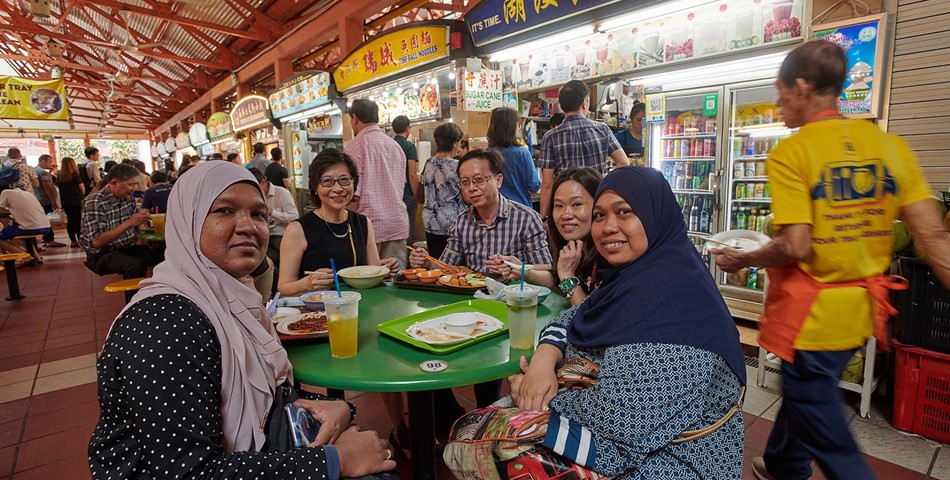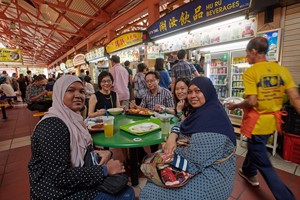Hawker Culture
Hawker Culture, involving the practice of dining and mingling at hawkers centers over food prepared by hawkers, is an integral part of the Singapore way of life.
Evolved from street food culture, hawkers and hawker centers have become markers of Singapore as a multicultural city-state. During the formative years of Singapore’s independence, hawkers and local communities, with the assistance of the government, came together to develop hawker centers, providing stable livelihoods for hawkers and affordable meals for the population. Today, hawker centers across Singapore continue to serve the needs of diverse communities in residential, recreational and business districts.
Hawker culture is enabled by hawkers in Singapore, who hold the culinary practices associated with food dishes prepared at hawker centers. The food reflects the multicultural make-up of Singapore, comprising mainly Chinese, Malay and Indian as well as various other cultures. Hawkers in Singapore take inspiration from the confluence of cultures, experimenting and adapting dishes to local tastes and context, reflecting a living food heritage through generations. Iconic hawker food includes rojak (local salad dish), laksa (spicy soup noodle dish), satay (skewered meat), roti prata (flat bread with stretched dough and ghee), chicken rice, char kway teow (stir-fried flat noodles) and many other dishes.
Hawker centers serve as “community dining rooms” where people from diverse backgrounds share the experience of dining over breakfast, lunch and dinner. One can see freshly prepared food at the hawker stalls and hear multi-lingual exchanges made over meals in a lively atmosphere. A typical hawker center comprises numerous food and drink stalls, and a common seating area. Dining at a hawker center is a quintessentially Singaporean experience, allowing one to experience a wide variety of multicultural food and drinks at affordable prices. It is common for people and even strangers to eat and interact at the same table regardless of religious or dietary differences.
Geographic Location
There are over 110 hawker centers spread across Singapore. Most hawker centers are located within neighborhood centers of public housing estates, serving as important communal spaces. There are also hawker centers situated in business and recreational districts, where people work and play.
Similar food practices and food centers can be found in neighboring countries and internationally, each having their respective context, cultural influences, and socio-cultural functions.














